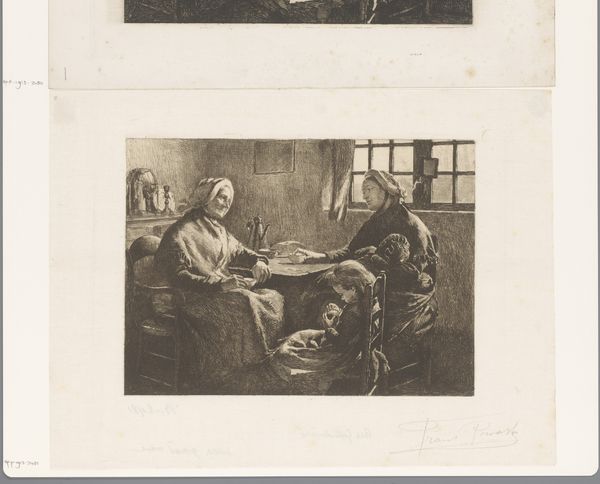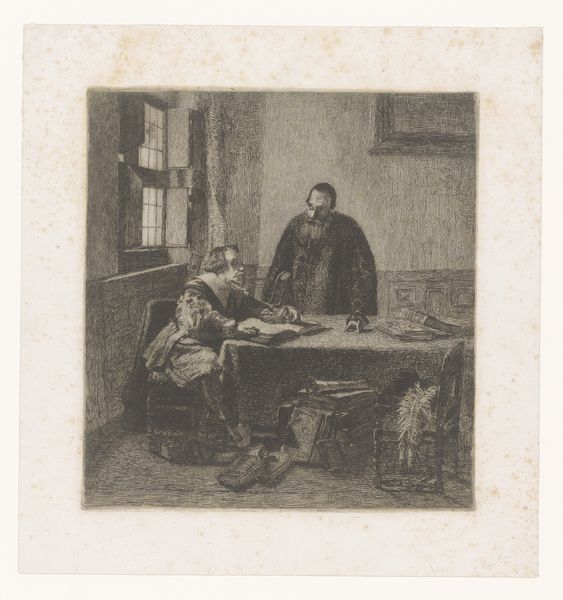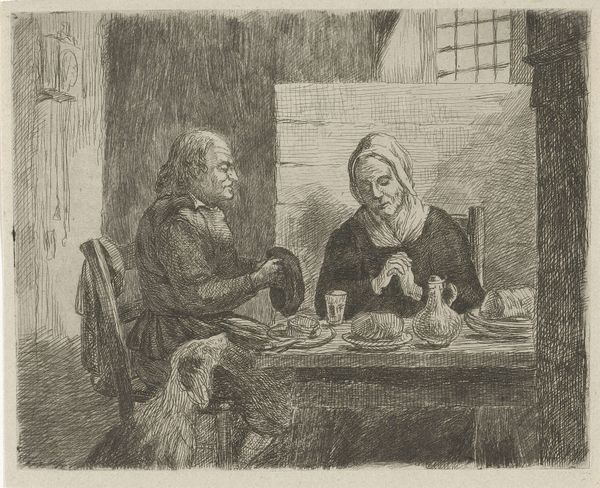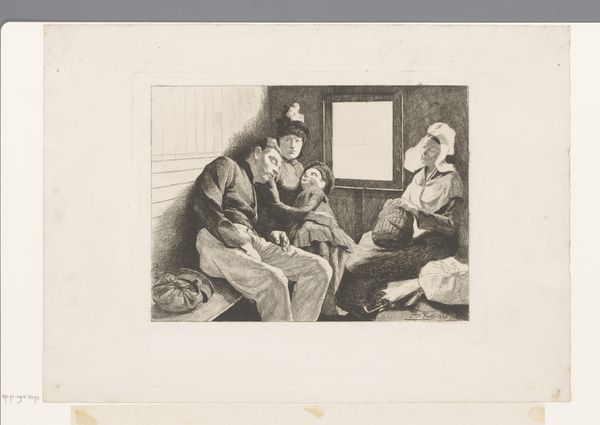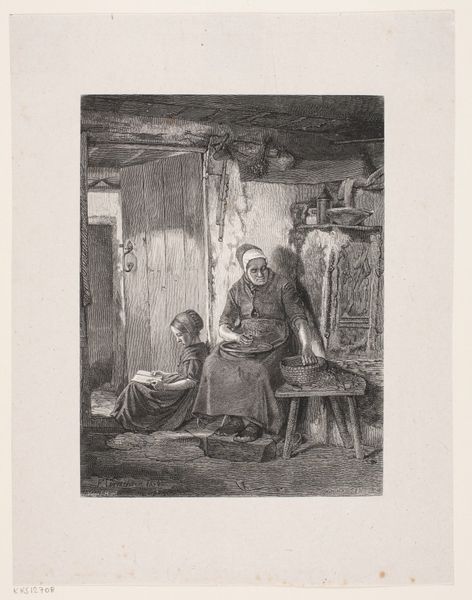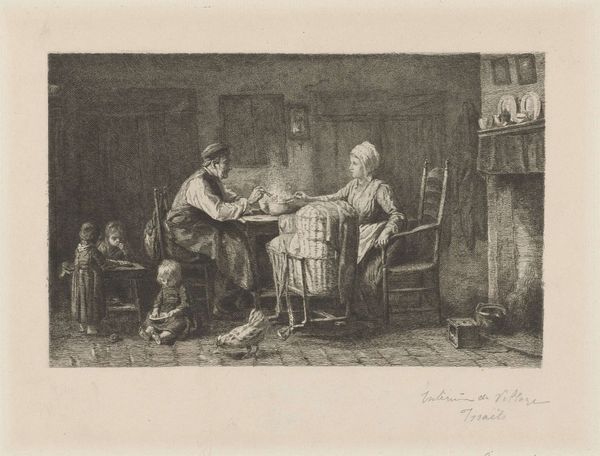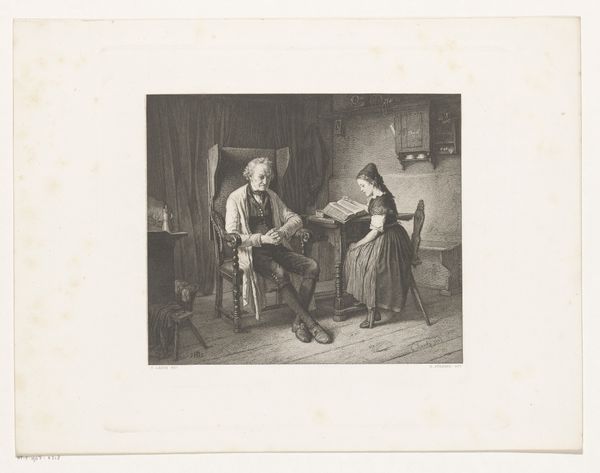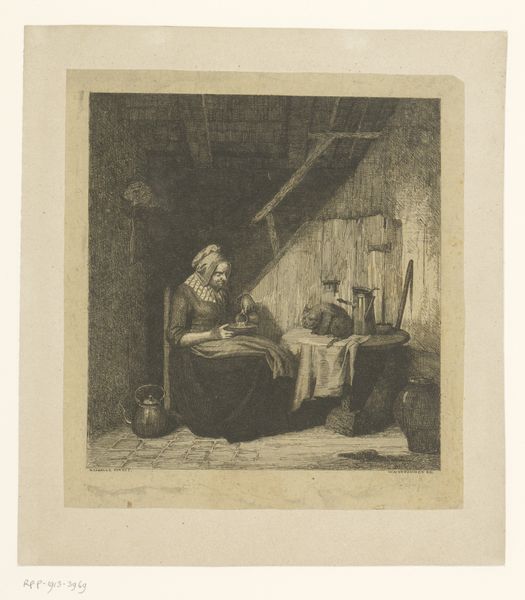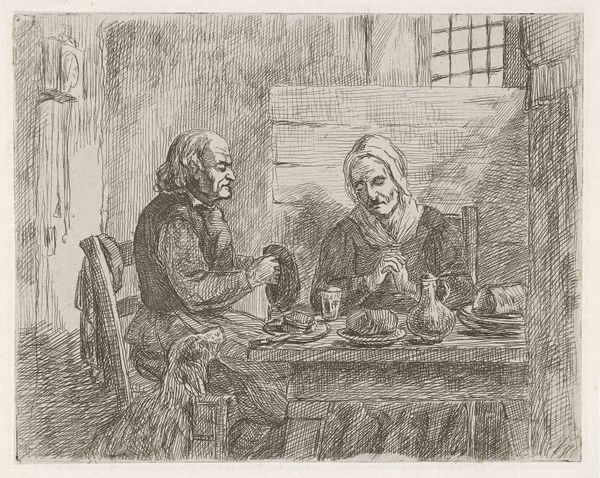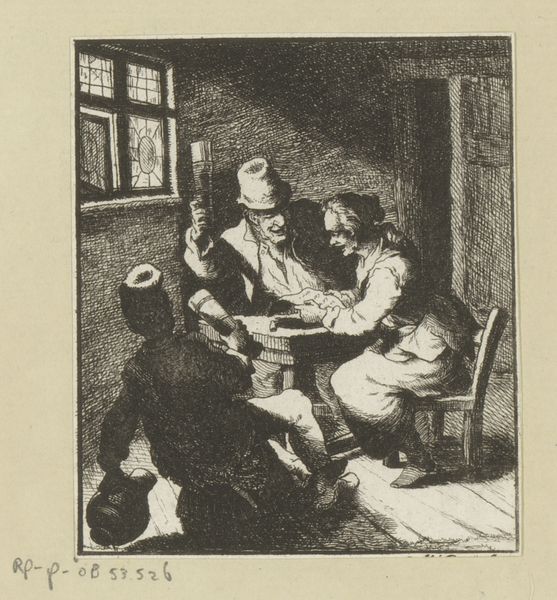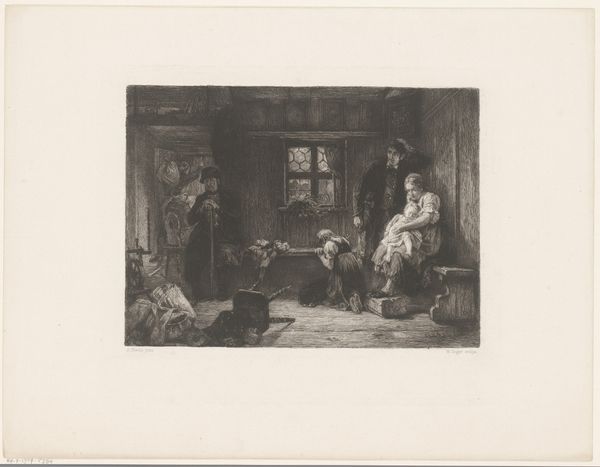
drawing, print, etching, intaglio
#
portrait
#
drawing
# print
#
etching
#
intaglio
#
figuration
#
genre-painting
#
realism
Dimensions: height 235 mm, width 318 mm
Copyright: Rijks Museum: Open Domain
Curator: Here we have an intaglio print by Frans Proost, dating roughly from 1885 to 1913, titled "Mother with Two Children Visiting Grandmother." The subdued palette speaks volumes, wouldn't you agree? Editor: Immediately, the feeling that hits me is one of quiet intimacy. The low contrast and tight composition suggest a contained world, almost secretive. The heavy shadows around the edges also feel protective, as if sheltering a secret space. Curator: It’s fascinating to consider how artists in the late 19th and early 20th centuries, especially within Realism, gravitated towards depicting domestic scenes. The family unit and familial relationships became vehicles to comment on broader social structures and the experiences of everyday people. Proost, in capturing this genre scene, actively participates in constructing this dialogue. Editor: Indeed. The figure of the grandmother, framed by the window, evokes associations with wisdom, tradition and a connection to the past. A strong matriarchal figure presiding over intergenerational connection and guidance for the mother as well as her children, especially in their most vulnerable states. Curator: That connection to the past is critical. Consider the period's emphasis on national identity and the ways family was employed as a symbolic foundation. Representations such as these are, inevitably, entwined with political messaging – reflecting idealised societal values that, inevitably, serve cultural agendas. Editor: I'd also say that, through those careful dark lines Proost uses in the etching, it is the timeless quality of these family connections he emphasizes. Look at the arrangement of faces, directing our attention from the eldest woman, to her visiting daughter, and, from there, onto her sleeping infant, tracing generational connections through sleep and watchfulness, innocence and wisdom. This tender image serves as an echo of so many family reunions or simple check-ins that, across time and cultures, unite us. Curator: It's powerful how an artist working within Realism can create this sense of universal and intimate recognition even whilst, possibly unwittingly, serving political messaging. It shows how depictions of the domestic were both reflections and instruments of cultural projection. Editor: It certainly provides much food for thought, showing just how art exists within and extends far beyond its original historical moments.
Comments
No comments
Be the first to comment and join the conversation on the ultimate creative platform.
